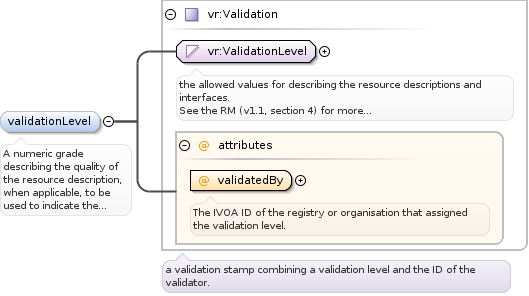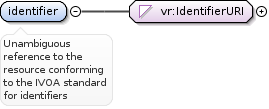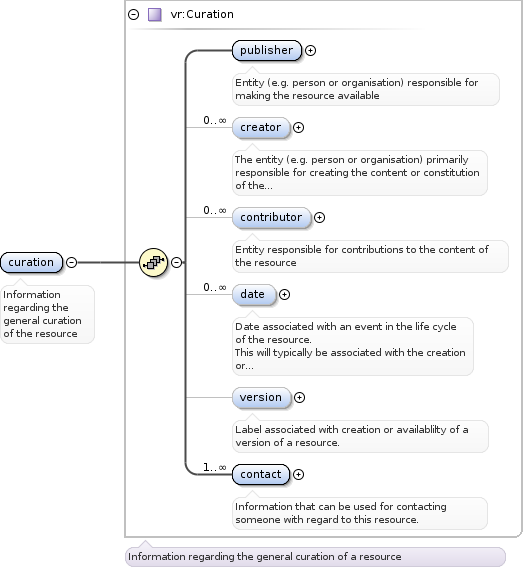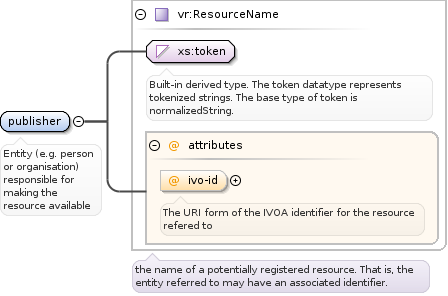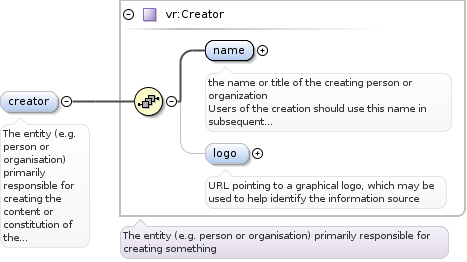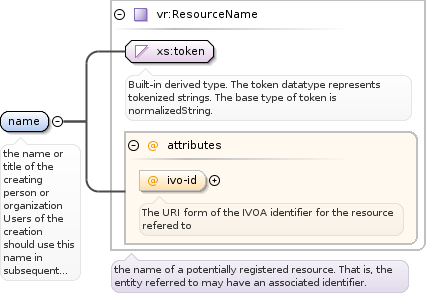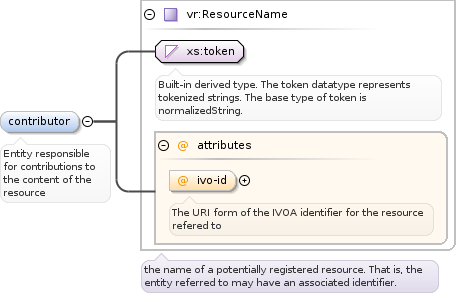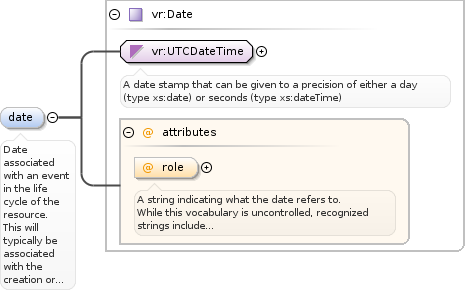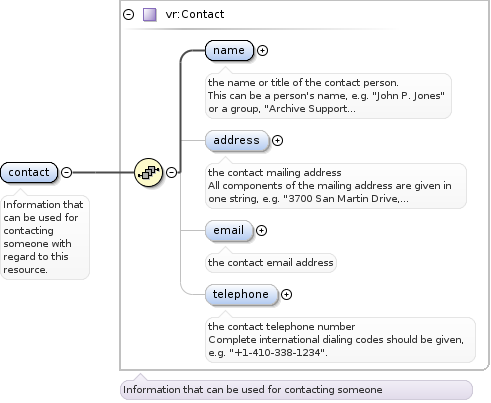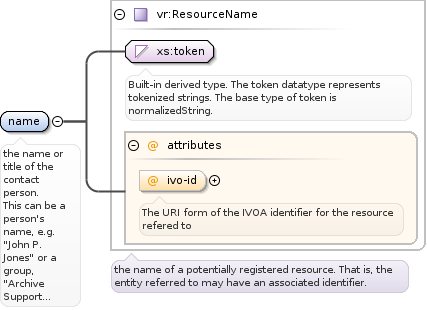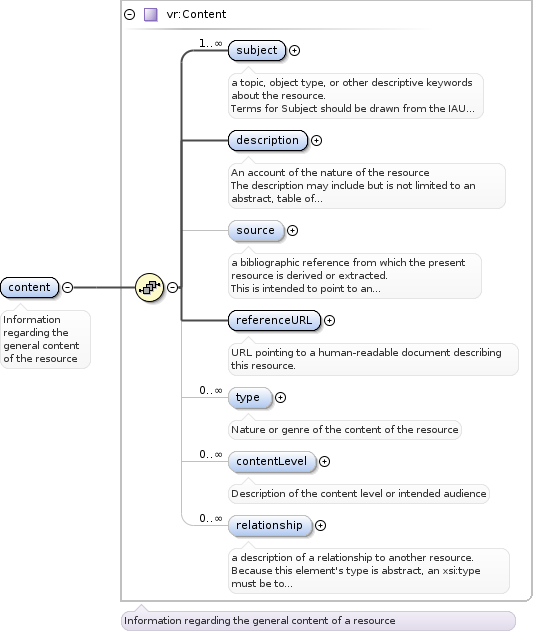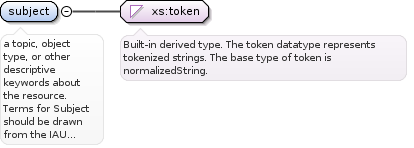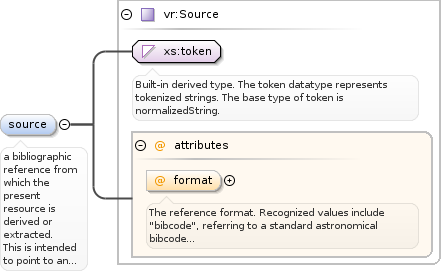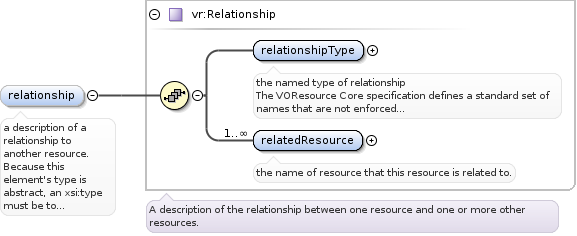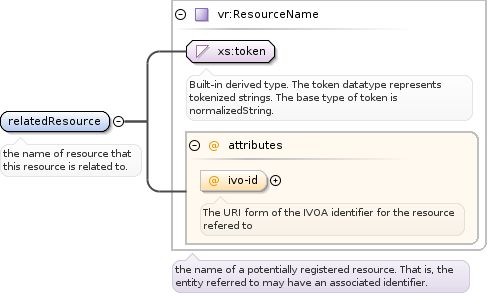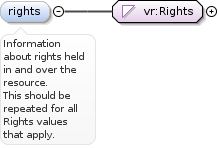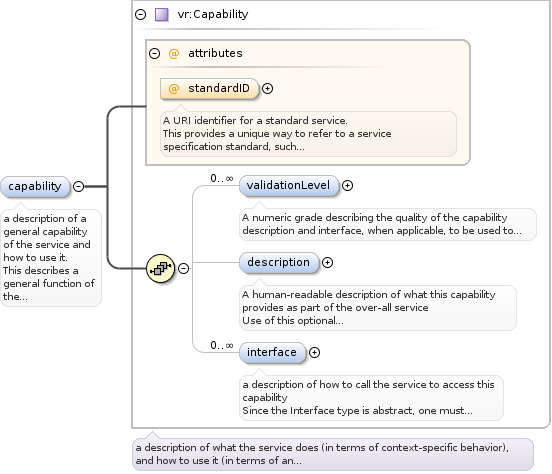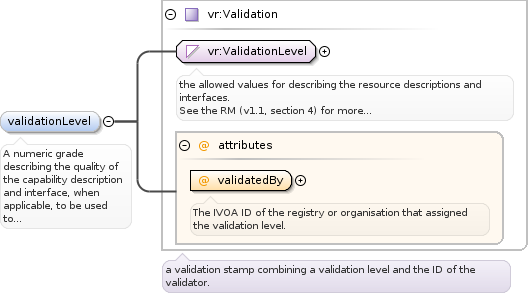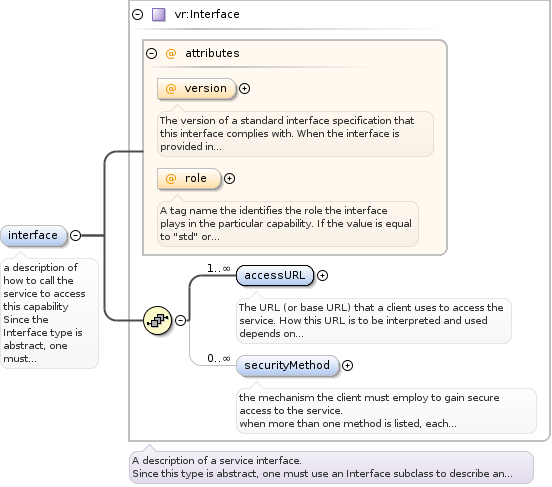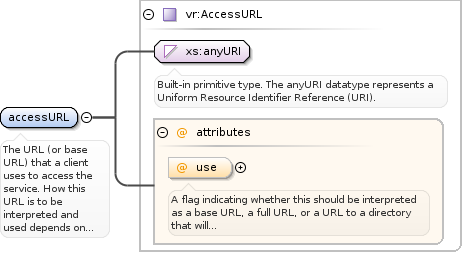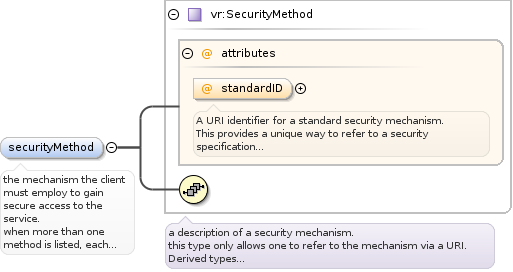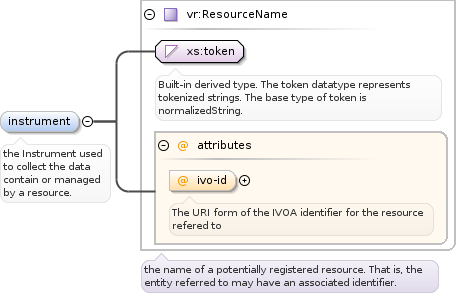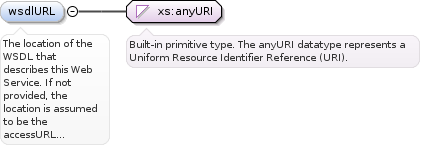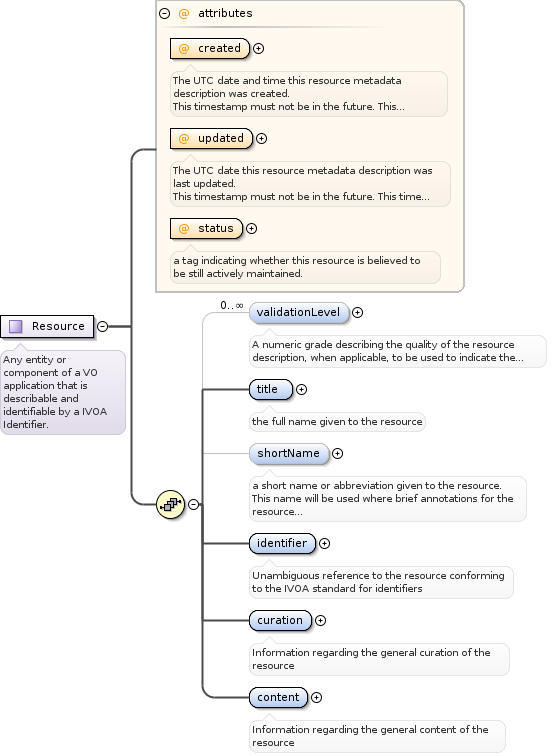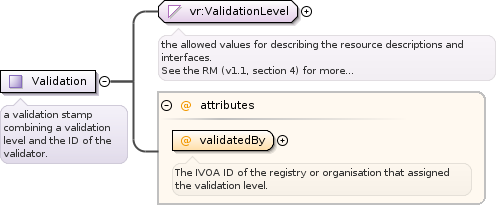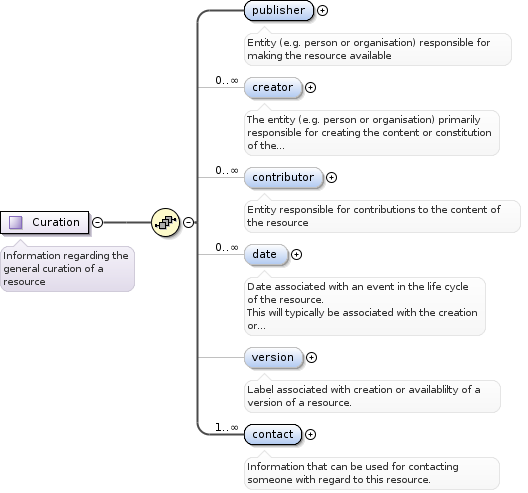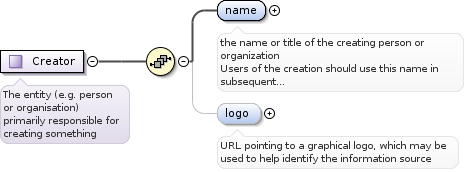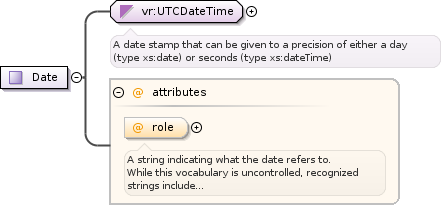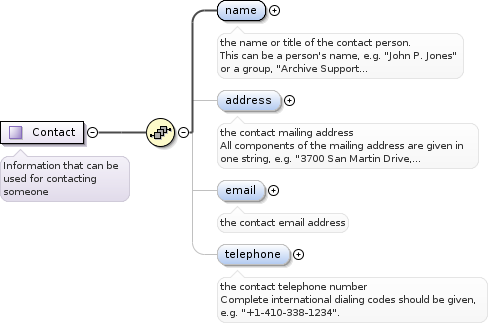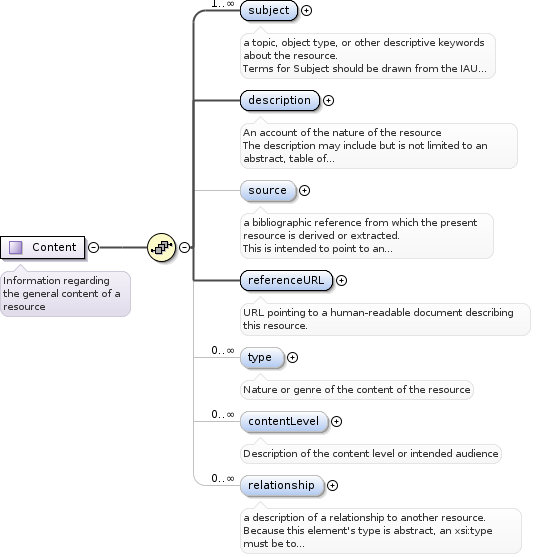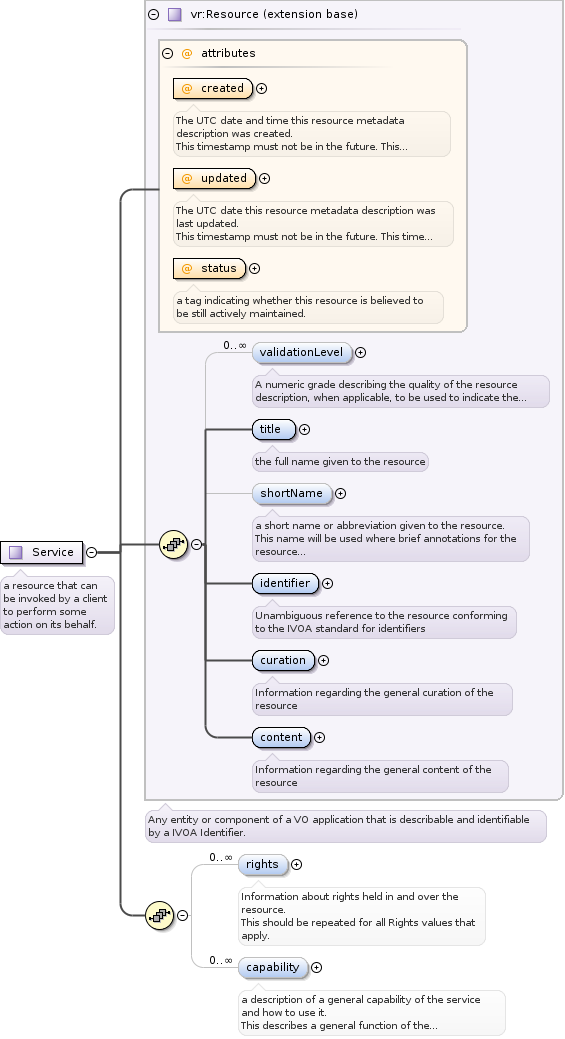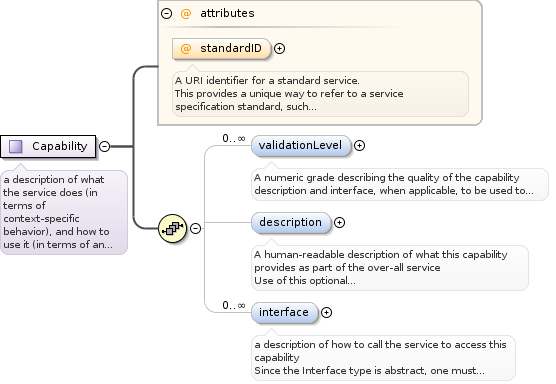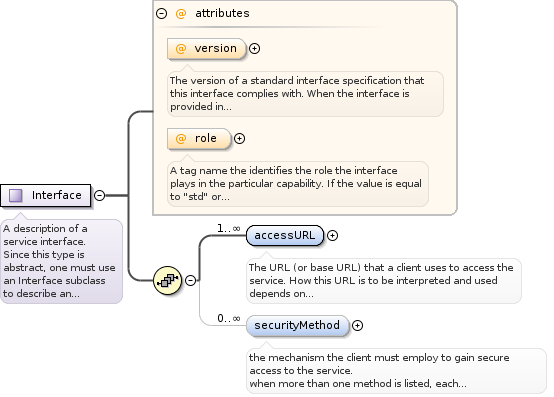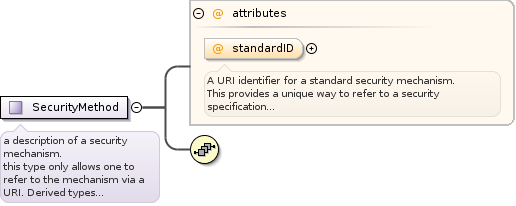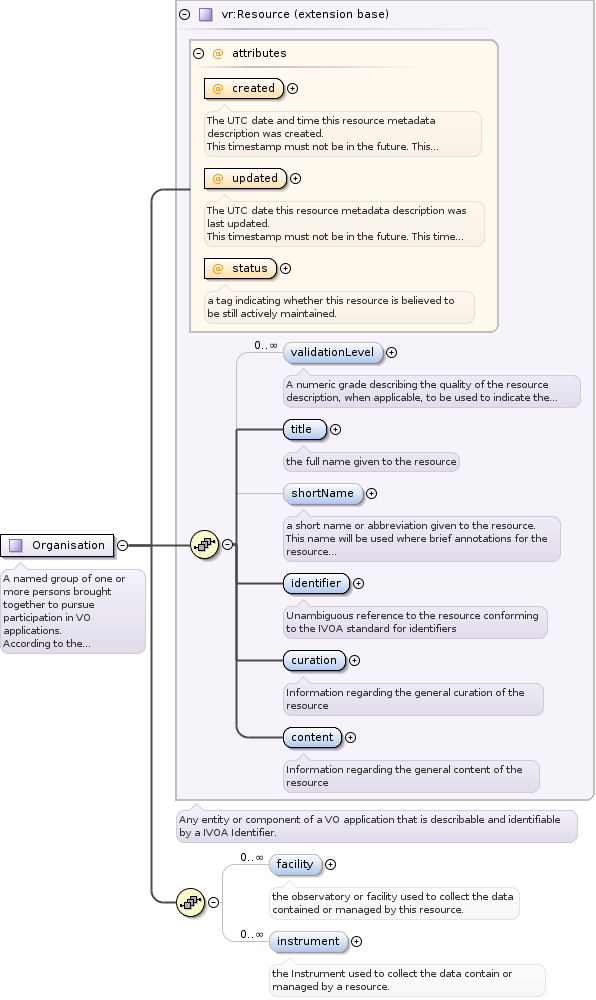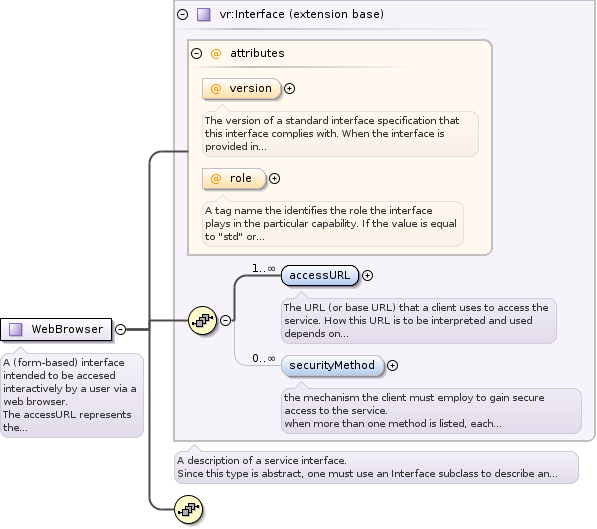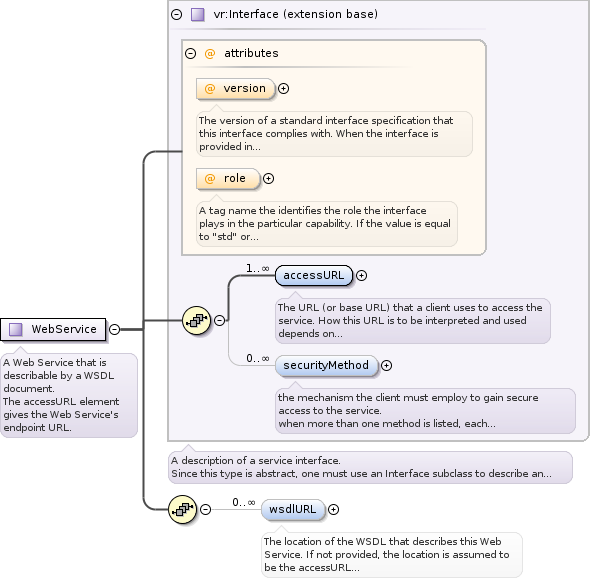| enumeration |
Other |
resource that does not fall into any of the category names
currently defined. |
|
| enumeration |
Archive |
Collection of pointed observations |
|
| enumeration |
Bibliography |
Collection of bibliographic reference, abstracts, and
publications |
|
| enumeration |
Catalog |
Collection of derived data, primarily in tabular form |
|
| enumeration |
Journal |
Collection of scholarly publications under common editorial
policy |
|
| enumeration |
Library |
Collection of published materials (journals, books, etc.) |
|
| enumeration |
Simulation |
Theoretical simulation or model |
|
| enumeration |
Survey |
Collection of observations covering substantial and
contiguous areas of the sky |
|
| enumeration |
Transformation |
A service that transforms data |
|
| enumeration |
Education |
Collection of materials appropriate for educational use, such
as teaching resources, curricula, etc. |
|
| enumeration |
Outreach |
Collection of materials appropriate for public outreach, such
as press releases and photo galleries |
|
| enumeration |
EPOResource |
Collection of materials that may be suitable for EPO
products but which are not in final product form, as in Type
Outreach or Type Education. EPOResource would apply,
e.g., to archives with easily accessed preview images or to
surveys with easy-to-use images. |
|
| enumeration |
Animation |
Animation clips of astronomical phenomena |
|
| enumeration |
Artwork |
Artists' renderings of astronomical phenomena or objects |
|
| enumeration |
Background |
Background information on astronomical phenomena or objects |
|
| enumeration |
BasicData |
Compilations of basic astronomical facts about objects,
such as approximate distance or membership in constellation. |
|
| enumeration |
Historical |
Historical information about astronomical objects |
|
| enumeration |
Photographic |
Publication-quality photographs of astronomical objects |
|
| enumeration |
Press |
Press releases about astronomical objects |
|
| enumeration |
Organisation |
An organization that is a publisher or curator of other
resources. |
|
| enumeration |
Project |
A project that is a publisher or curator of other resources |
|
| enumeration |
Registry |
a query service for which response is a structured
description of resources. |
|
